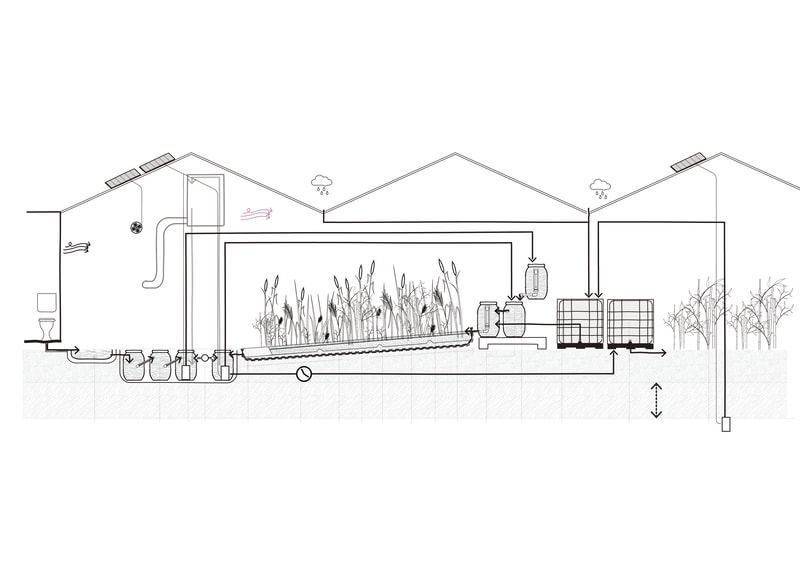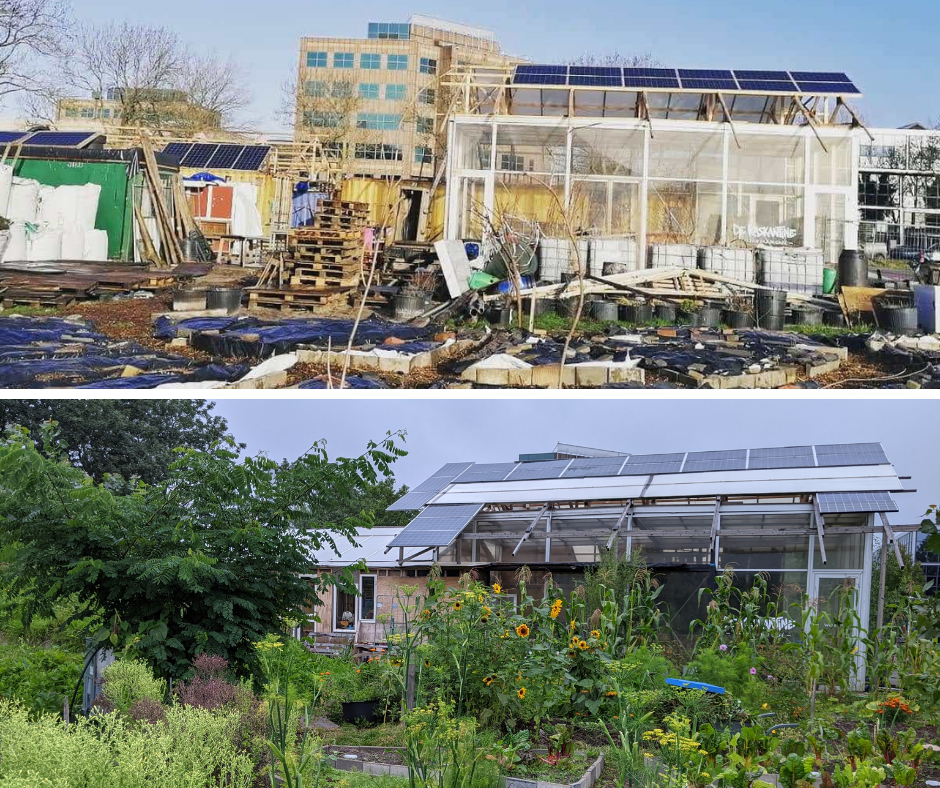All wastewater from the kitchen is used for plants in a special greenhouse. The wastewater from the toilets is used for the production of biomass. We utilize helophyte filters in a closed-loop system, resulting in zero output and eliminating the need for a sewer connection.
The dimensions of a sewage system without faeces using urine-diverting dry toilets (UDDT) are about 10 times smaller than a "black water" system . This has considerable economic and ecological advantages. The most important advantage is that because of the small dimensions, it becomes fairly easy to recycle the output of the water treatment system internally in the greenhouse.
This system is designed for 200 litres of urine and hand-washing water daily. This capacity is enough for about 50 guests per day.
The dimensions of a sewage system without faeces using urine-diverting dry toilets (UDDT) are about 10 times smaller than a "black water" system . This has considerable economic and ecological advantages. The most important advantage is that because of the small dimensions, it becomes fairly easy to recycle the output of the water treatment system internally in the greenhouse.
This system is designed for 200 litres of urine and hand-washing water daily. This capacity is enough for about 50 guests per day.
Climate Change: Efficient water usage and proper wastewater treatment are critical components in tackling the water scarcity challenges that climate change intensifies. Responsible wastewater management is vital for maintaining sustainable water systems.
SDG: Our on-site closed cycle wastewater treatment contributes to SDG 6.3 (Wastewater treatment and save reuse).
Community or Individual Action:
Wastewater management in your own homes and community:
Wastewater management in your own homes and community:
- Installing Water-Saving Devices: Use low-flow toilets and efficient showerheads to minimize water usage and reduce the burden on water supply systems.
- Exploring Graywater Recycling: Consider implementing graywater recycling systems. These systems collect and treat water from sources like sinks and showers for reuse in irrigation, reducing the demand on potable water for landscaping.
- Raising Awareness: Educate others about responsible wastewater management. This can be done through community workshops, sharing information online, or discussing the importance of water conservation with family and friends.
- Reuse vegetable-washing water: When washing vegetables, collect the water and use it to water your plants.
Kaskantine 2022
How to find Us |
Contact UsContact email: info [at] kaskantine.nl
Read our Privacy policy
|
Kaskantine 2024




